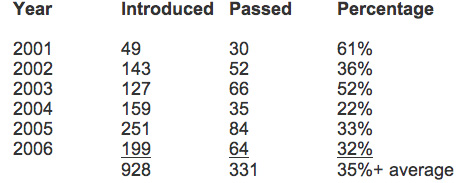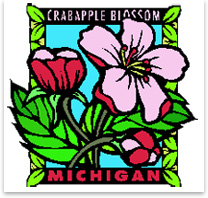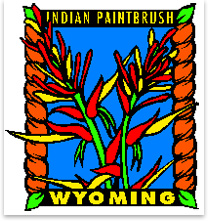
|
Design-Build Legislation Sweeps the Nation
More than 300 new laws in six years.
This brings the total for the past six years to 331 passed out of 928 introduced. The passage rate of over 35 percent is far more than the average pass rate for legislation introduced in the states annually. To the surprise of many, this legislation is “owner-driven” by government agencies, cities, and school districts—not by the AIA, DBIA, AGC, or any other industry association. Public owners are looking for alternatives to low-bid, multiple contracts and are attracted by the cost and time savings that design-build can offer. Five states remain without d-b laws. Under the 1996 act, all federal “executive agencies” are permitted to use design-build if that method is appropriate for the public project. If so, then the first phase of the process involves evaluation of specialized experience and technical competence of the proposers. Cost-related evaluation factors are not permitted in this phase. Then, proposers submit bids for the project. The contract is awarded to the design-build team with the highest overall ranking, based on qualifications and price. (Reference 2.) As a result of passage of the 1996 federal design-build statute, the Federal Acquisition Regulations (FAR) were amended in 1997 to incorporate design-build procedures. (Reference 3.) Following the lead of the federal government, state legislators passed laws across the nation to enable public agencies to use design-build as an alternative method of delivery. As of the start of 2006, there were only six states left that had no authority to use design-build on public projects. Kansas was one of these holdout states (other than its sunsetted legislation that had permitted two “pilot” projects). In early 2006, however, the Kansas legislature overwhelmingly adopted a public design-build law, which passed as House 122-2 on February 8, passed as Senate 31-8 on March 22, and was presented to the Governor on March 31. (Reference 4.) The new law allows Kansas state agencies and “state educational institutions” to use:
Five states remain holdouts
Iowa has not had any design-build legislation proposed in recent years. There may be a crack opening in Iowa’s resistance, however. On January 10, 2007, Senate Study Bill 1008 was introduced, which would permit the armory board to enter into design-build contracts for the construction of certain national guard facilities funded entirely with federal funds.
The state appears ready to move beyond the “study and report” stage. A new highway design-build bill was introduced on January 30, 2007, S.B. 116. The bill provides that starting January 1, 2008, all “federal aid” construction projects and any other project of the Michigan Department of Transportation concerning highways, streets, roads, and bridges over $5 million “shall be performed by design-build contract” by competitive bidding. This would be a major move for Michigan after years of studying the issue.
5. Wyoming. In 2004, Wyoming introduced a design-build bill but it did not pass. No bill was introduced in Wyoming in 2005. However, in 2006 a bill was passed to permit broad use of “alternative project delivery” methods including construction manager-agent and construction manager-at risk. (Reference 9.) The new law covers the state and any county, city, town, or any political subdivision thereof. A related statute allows public schools in that state to use these same alternate design and construction delivery methods for provision of design and construction services. (Reference 10.)
Keep a close eye on Iowa, Michigan, and Wyoming for possible design-build movement yet this year. It’s down to just 5 states before all 50 states have laws on the books to permit public use of design-build for some projects. |
||
Copyright 2007 The American Institute of Architects. All rights reserved. Home Page |
||
news headlines
practice
business
design
1. Pub. L. No. 103-355, 108 Stat. 3243 and Pub. L. No. 104-106, § 4001, 110 Stat. 186, 642. The portion of the 1996 Act that adopted the two-phase selection process has been re-named the “Clinger-Cohen Act.”
2. 10 U.S.C. § 2305a and 41 U.S.C. § 253m.
3. 48 C.F.R. §§ 36.102 - 36.104 and 36.300 - 36.303 outline the process of soliciting and evaluating design-build proposals.
4. Kansas H.B. 2394 (2006).
5. Anderson v. Fayette County Bd. of Educ., 738 So.2d 854 (Ala. 1999)
6. See, e.g. Ala. Atty. Gen. Op. No. 2000-152 (2000); Op. No. 95-00303 (1995); and Op. No. 84-00263 (1984).
7. Food Manage-ment, Inc. v. Blue Ribbon Beef Pack, Inc., 413 F.2d 716 (8th Cir. 1969).
8. Michigan S.B. No. 372 (1999); S.B. 239 (2001); S.B. 265 (2003); S.B. 1097 (2006).
9. Wyoming H.B. 135 (2006), codified at Wyo.Stat. § 16-6-701.
10. Wyo. Stat. § 21-15-114 (J).



 2. Iowa.
2. Iowa. 3. Michigan.
3. Michigan. 4. Rhode Island.
4. Rhode Island. A new bill has already been introduced in Wyoming in 2007 to add design-build to the menu of alternative delivery methods that can be used on these public projects. S.F. 148 (2007) was introduced on January 19, 2007, and would essentially allow public bodies and school districts to permit use of design-build. The bill would allow selection on qualifications alone for projects over $500,000.
A new bill has already been introduced in Wyoming in 2007 to add design-build to the menu of alternative delivery methods that can be used on these public projects. S.F. 148 (2007) was introduced on January 19, 2007, and would essentially allow public bodies and school districts to permit use of design-build. The bill would allow selection on qualifications alone for projects over $500,000.